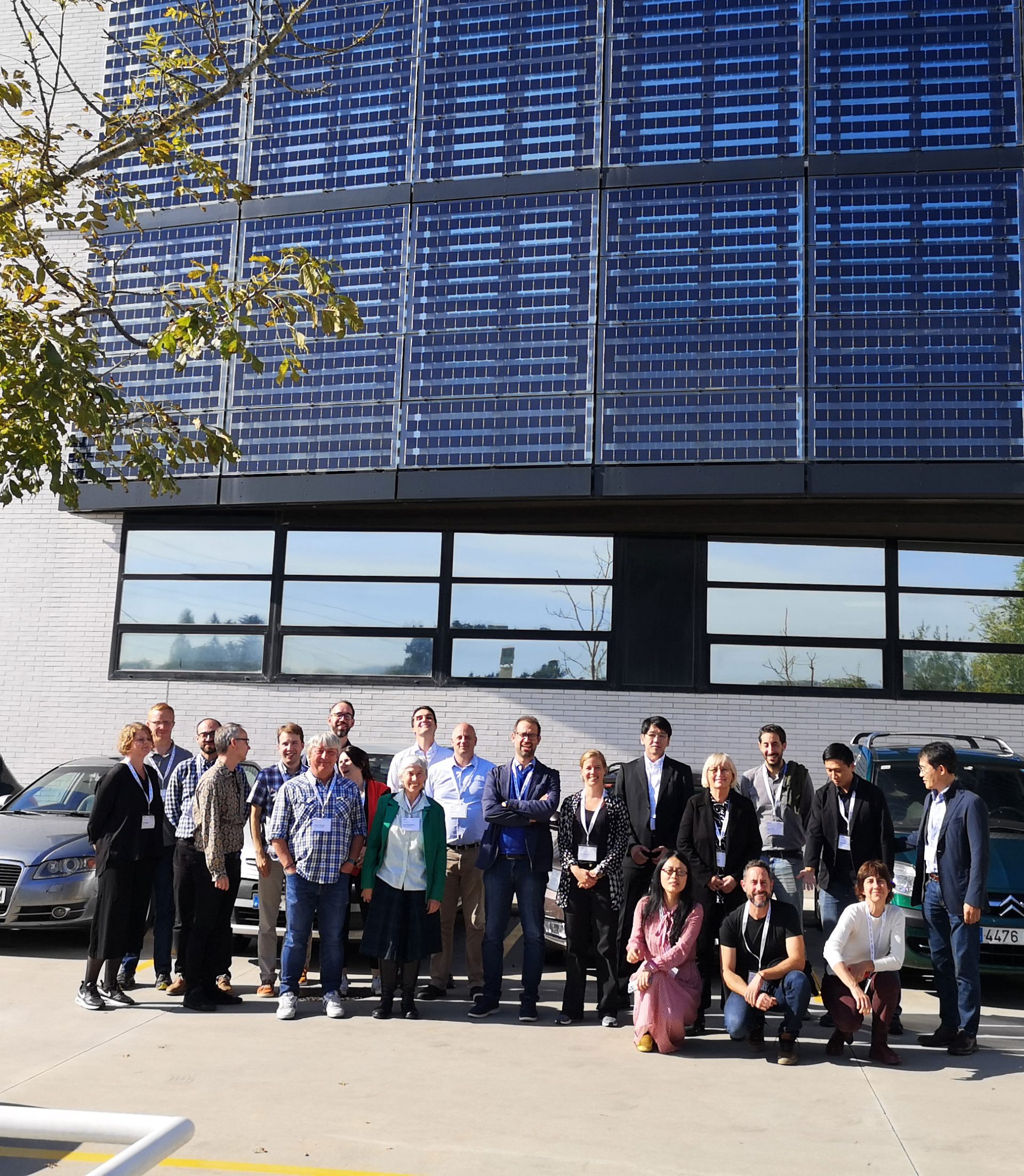"TECNALIA has hosted the International Energy Agency meeting on photovoltaic integration in buildings (BIPV)"
Decarbonisation of the economy and power generation contribute to sustainable development
The energy generated by photovoltaic solar panels is clean, inexhaustible and modular. Their application can range from large photovoltaic plants in the field, to the integration of photovoltaic elements in buildings BIPV, - Building Integrated PhotoVoltaics. Continuous improvements in this solution contribute to a reduction in its cost and increased aesthetic appeal.
Working group to promote BIPV technology
TECNALIA is a member of the International Energy Agency’s IEA PVPS Task 15working group. Enabling Framework for the Development of BIPV working group on the integration of photovoltaics in buildings. The objective is to create an enabling framework for the development of BIPV technology, through the penetration of BIPV products in the global renewable energy market, taking into consideration regulatory, aesthetic, financial and reliability aspects.
At the beginning of this month, TECNALIA hosted this working group’s six-monthly meeting at its headquarters in Donostia-San Sebastián.
Opportunities for photovoltaic integration in buildings and in the urban environment
Taking advantage of the presence of international BIPV experts and high-level professionals in photovoltaics, construction and architecture, a workshop on BIPV was also organised for professionals interested in the integration of photovoltaics in buildings and other infrastructures, including architectural firms, construction professionals, glass manufacturers and transformers and manufacturers of photovoltaic elements.
Nearly 100 people joined the event in a mixed format (face-to-face and on-line), in which experts and leading companies in the BIPV sector (ONYX Solar, Kromatix, Virden+Partners, CIEMAT, TECNALIA as speakers and many others as attendees) provided keys, presented new technological trends, and discussed the opportunities and challenges associated with photovoltaic integration in buildings and in the urban environment.
The workshop discussed the enormous energy and economic impact of incorporating photovoltaic technology in our cities, especially through the use of BIPV products: building elements, such as façades, windows, roof tiles and skylights that integrate photovoltaic elements. They produce electricity and can also be depreciated, an advantage over traditional construction elements.
New façade and roof solutions were also presented, including coloured BIPV solutions, thanks to the use of hiddenPVcell technologies on glass. Furthermore, the role that BIPV technology is expected to play in the European energy transition was analysed and the results and recommendations following the TIS(Technological Innovation System) analysis, carried out in Task 15 for Spain, were presented.
At the same time, technical issues to be taken into account in the installation and maintenance of these photovoltaic systems in buildings were also discussed. In addition to complying with the regulations for photovoltaic systems, the technical building code must also be followed, as well as other regulations for building elements, such as the challenges of technology in relation to fire safety.
Therefore, the case study of the process carried out in the refurbishment of the façade of the TECNALIA headquarters in San Sebastian using photovoltaic elements was described.
BIPV technology and implementation of sustainable solutions
Among the conclusions reached, the need to increase European manufacturing capacity in order to meet foreseeable growth in market demand over the coming years can be highlighted, due to the small number of manufacturers currently in existence. Architects, builders and urban planners should adopt BIPV technology and implement sustainable solutions, thus optimising existing land resources for other purposes.
On the other hand, there is a need to unite the construction and BIPV sectors to improve capacity in terms of the new technologies available on the market. It is also a prerequisite to incorporate professionals with specific knowledge, who can deal with the design and installation of BIPV solutions in a comprehensive manner.
Building-integrated photovoltaics, in addition to being cost-effective, can generate a significant share of the total energy required by buildings, addressing a market with great prospects for the future, where continuous technological development, cost reduction and favourable European regulation will act as "tailwinds” to further boost its development.
Integration of photovoltaics in buildings
- The recording of the event "PV integration in buildings" is available on our YouTube channel.
- Welcome - Chairman - Daniel Valencia-Caballero (Senior BIPV Researcher at TECNALIA)
- TECNALIA introduction - José Luis Elejalde (Director of Business Unit of Energy, Climate and Urban Transition at TECNALIA)
- Why BIPV in buildings? Energy and economic impact - Julen Astudillo (Senior Façade Researcher at TECNALIA)
- Photovoltaics-Façade - Energy + Aesthetics + Business - Karl Viriden (CEO at Viriden+Partners)
- Design experience with coloured KROMATIX PV modules - Thomas Friesen (CTO at SwissInso - Kromatix)
- BIPV solutions. New trends in BIPV - Teodosio del Caño (CTO at Onyx Solar)
- Steps of a real BIPV façade case in Spain - Jose Mari Vega de Seoane (Senior BIPV Researcher at TECNALIA)
- BIPV in Spain: main results and recommendations after the TIS analysis performed in Task 15 - Nuria Martín (Senior BIPV Researcher at Ciemat)
- Fire safety trends in buildings and their impact on BIPV - Xabier Olano (Fire safety lab manager at TECNALIA)
- Closing talk - Chairman - Daniel Valencia-Caballero (Senior BIPV Researcher at TECNALIA)

